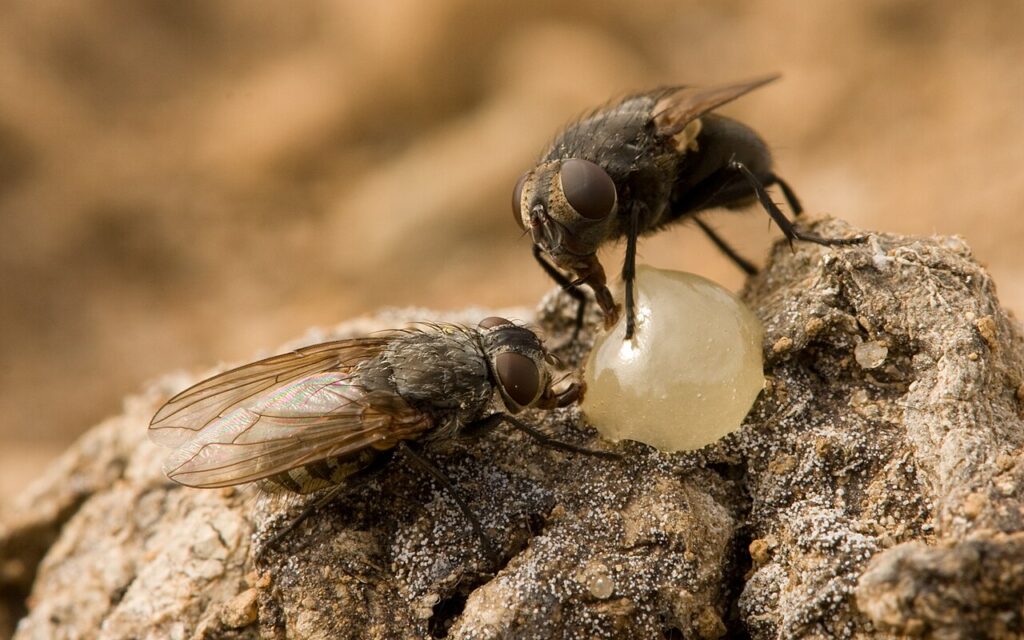Cluster Fly: Identification, Facts, and Control

The cluster fly (Pollenia rudis) is often mistaken for the common house fly, but there are key differences important for cluster fly control. Cluster flies are fatter, slower moving, and lack the characteristic stripes found on the house fly’s thorax. Their sluggish nature, coupled with a dull, dusty appearance, sets them apart visually.
Cluster Fly Behavior
Cluster flies get their name from their habit of clustering together inside homes during the fall. As temperatures drop, these flies seek warmth in secluded areas like attics and wall voids. Once inside, they tend to remain dormant until the warmer days of winter or early spring, when they become active, often seen crawling around walls and windowsills. Unlike house flies, cluster flies are not as noisy and don’t fly around much indoors, making them a quieter nuisance.
Lifecycle
In the spring, cluster flies mate and lay their eggs in the soil. Within three days, the larvae hatch and burrow into earthworms, where they develop. This unique parasitic relationship with earthworms is part of what makes the cluster fly less likely to spread diseases compared to house flies, as the larvae don’t feed on filth or excrement. The full life cycle of a cluster fly spans about 27 to 39 days.
Control and Prevention
Controlling cluster flies involves both preventative measures and direct intervention:
- Sealing entry points: Properly sealing cracks, crevices, and other potential entry points around windows, doors, and attics can help prevent these flies from entering your home.
- Ventilation and cleaning: Keeping attics well-ventilated and clean can reduce the attractiveness of your home to cluster flies.
- Professional pest control: If you’re experiencing a severe infestation, professional exterminators can provide targeted treatments to remove and prevent future infestations.
Although cluster flies do not pose a significant health risk, studies suggest that they may be potential carriers of disease. A study published in PubMed highlights the possible transmission of pathogens by cluster flies due to their interaction with bacteria during their lifecycle link to study. If you’re struggling with cluster flies in your home, contact us at Traffic Pest Solutions for effective and thorough pest control services tailored to eliminate cluster fly infestations and ensure your home remains pest-free.
Let us help you reclaim your space from these unwelcome visitors!
FAQ
- How do I get rid of cluster flies in my attic naturally?
To get rid of cluster flies naturally, try sealing cracks and crevices, using essential oils like lavender or peppermint, and installing fine mesh screens over vents. - What attracts cluster flies to my home in the fall?
Cluster flies are attracted to warmth and often seek shelter in attics or wall voids during fall as they prepare for winter hibernation. - Why are cluster flies in my house during winter?
Warm winter days can wake cluster flies from their dormant state in attics or walls, causing them to crawl into living spaces. - Are cluster flies harmful to humans or pets?
Cluster flies are not harmful to humans or pets. They don’t carry diseases or damage structures, but they can be a nuisance. - What’s the best professional pest control solution for cluster flies?
Professional pest control services can offer targeted treatments like sealing entry points, applying residual insecticides, and removing existing infestations to keep cluster flies at bay.
